Breakout for ATtiny3224, 1614, and all other 14-pin tinyAVR 0/1/2-series parts, Arduino compatible - but not required
Designed by Azduino by Spence Konde in United States of AmericaThis seller is taking a break. Sign up below to get an email when they're back!
No shipping info available.
Set destination country to see options
Shipping to starts at
Free shipping is available to !
Ships from
This item does not ship to .
More Info
Sign up and we'll send a reminder when the seller returns!
Assembled board shown for reference only - this is the listing for the BARE BOARD **Assembled boards with 1624, ATtiny1614 or the new ATtiny3224 are available in my other listing This is a breakout …
Read More…Assembled board shown for reference only - this is the listing for the BARE BOARD
**Assembled boards with 1624, ATtiny1614 or the new ATtiny3224 are available in my other listing
This is a breakout board for the ATtiny 0/1/2-series with 14 pins. These feature the latest and greatest peripherals in a low cost tinyAVR package (in fact, they are in most cases cheaper than classic tinyAVRs), including the 3224, 1624, 824, 424, 3214, 1614, 814, 414, 1604, 804 - all the 14-pin tinyAVR 2-series, 1-series and 0-series ATtiny parts. These are highly capable and affordable ATtiny parts - prices are lower than most classic AVR ATtinys with the powerful megaAVR peripherals. These parts are fully compatible with Arduino using my megaTinyCore, too.
*); it has a significant impact on how aggressively parts can be successfully overclocked), and mark PB0 and PB1 with their I2C functionalities. The biggest change between Rev B or earlier vs C amd later is tje size. They're narrower than the old ones: Now the rows of pins on the edges are 0.6" apart, the same width as a Nano - and you know what that means: You can also put machined pin header on them, facing down, and plug them into a Wide DIP socket, This works great with my prototyping boards, especially the new 1.5" x 4" DIP-48 ones. The machined pins are also far better for use with breadboards, since they don't deform te contacts in the holes like normal pin header. We switched to dark blue solder mask to improve readability of solder mask, pins are now marked with both the pin name in Pxn notation (eg, PB2 is the pin corresponding to bit 2 of PORTB, and can be referred to if using my Arduino core as PIN_PB2 - since the functions are based on this, using this notation makes it easy to port your design between tinyAVR parts with different numbers of pins. For example, you want to output some PWM on 2 pins, so you choose PB0 and PB1. If you later realized that you needed more pins than you thought, and switch to a 20-pin part, if you used numbers to refer to the pins, those number would be different, and have to be changed, while if you called them PIN_PB0 and PIN_PB1 (and did the same with all other pin references) you could be assured that moving from a 1624 to a 1626, 3226, or 3227, all of the pins you'd already chosen would still have the same capabilities as they did on the 1624. I personally have found this to be indispensable when porting snippets of useful code around.
We have also improved markings around the groups of jumpers on the back for making use of the DTR and CTS lines, and changed the default connection for CTS (which can be be either grounded, for software that uses that to detect the present of hardware, tied to a pin, namely PB1, which is the XCLK pin when the other pins are used as USART, which makes it possible to implement synchronous serial mode with the same 6-pin connector. Finally, and what is connected by default, the CTS line can be connected to UPDI. This allows a special programmer/serial adapter to provide programming and serial through the FTDI connector. An attempt was also made to clarify the options for the DTR line: direct to PB0 (XDIR if that feature is used, which would enable convenient connection over the 6-pin header RS485 transcievers for longer distance transmission), OR it can be part of the normal autoreset circuit. Unfortunately this is a real pain to use on on tinyAVRs, since you need HV to reprogram them which means you have to disable the autoreset and it's diode to Vdd. These convenience options synergize with the API extensions offered though megaTinyCore See the mTC Serial Reference for more information about how almost all USART functionality is exposed in Arduino via simple and backwards compatible API exertions.
This is a breakout board for all of the "modern" ATtiny parts in SOIC-14 pin packages. They are numbered like: ATtinymmd4 where mm is flash size is kb, d is the series, 0, 1 or 2, and the 4 indicates that it's the 14-pin version. The 8-pin parts end in 2, 20-pin ons end in 6, and 24-pin ones in 7 (my understanding is that the 14, 20, and 24 pin versions use the same die; a complication resulting from this may be the reason that we saw so few 8-pin tinyAVR parts released, as those appear to have a different die.
All of the modern tinyAVR devices are highly capable and affordable - prices are lower than most classic AVR ATtiny devices (as with EVERYTHING since the 2016 AVR revolution) - while the peripherals use the latest and greatest technology (let's face it - the classic AVR peripherals had been getting a little stale. Actually, they'd been stale for a while). As far as I can tell, Microchip tests out their new technology on a tinyAVR before bringing it to a full sized chip most of the time. The tinyAVR 1-series brought us the Type D high speed async timer which then showed up in 2020 on the DA-series - and while the headline features of the DB-series were entirely novel, the only other changes that showed up in the DA/DB series were evolutionary. Now, in 2021, the amazing new fully differential ADC wth Programable Gain Amplifier (PGA) is featured on the 2-series tinyAVRs; this has been announced for the AVR EA-series line of full size parts for future release. These parts are fully compatible with Arduino using my megaTinyCore, and you can access the full functionality of the new ADC through a handful of new functions, or use analogRead() for backwards compatible ADC functionality.
| Ref. Des | Part on Rev. C/D |
|---|---|
| U1 | 14-pin tinyAVR 0/1/2-series |
| C1 | 0805 0.1uF cap |
| C2 | 0805 output cap for regulator* and/or board-level decoupling. |
| C3 | 1206 Input Cap for regulator* |
| C4 | 0805 0.1uF capacitor if using autoreset only. |
| C5 | (optional) 0805 cap if oscillator Y1 installed. 0.01uF or per osc. datasheet. |
| R1 | 1206 470 ohm resistor - Series resistor for UPDI pin, |
| R2 | 0805 10k resistor if using autoreset only. |
| D1 | SOT-23 diode (cathode to middle pin, anode to left pin. We use dual-diode common cathode arrays, which are available at a similar price point ) |
| D2 | Omit on Rev. C (no connection). On Rev. D 1206 LED, connected to PA7 through R3. |
| R3 | Omit on Rev. C (no connection). On Rev. D 1206 resistor (ballast for LED - 2.2k ~ 220 ohm depending on how bright you like your LEDs - I use 1k) |
| U2 | (optional) 1117-series or compatible voltage regulator in SOT-223 package (Recommended: LDL1117). |
| F1 | If using regulator, or jumpering across regulator as described below, place 1206 PTC fuse (1A max recommended, can replace with jumper if you like to live dangerously or your power supply is already current limited) |
| Y1 | 3225 package Oscillator (not just a crystal, these parts don't support crystals). ** |
* 4.7uF or as directed by regulator datasheet
** if Y1 is installed, cut the bridge between PA3 and the through hole normally connected to it for best results. 32 MHz is very possible with solid power supply and external clock.
If you plan to run directly off a battery (ex, a protected LiPo battery), but still want the PTC fuse protecting the power from battery, a 2512 0-ohm resistor can be soldered between the pads for the regulator tab and pin furthest from the fuse to jumper around the regulator; this will connect the fuse (and hence Vin header) directly to Vcc.
Additionally, you will almost certainly want some pin header. 1x3 for UPDI header, 1x6 for FTDI serial header. 2 1x15 headers for the I/O pins - recommend normal square header for use with DuPont jumpers, or machined pin header for use with breadboard. All 0.1" pitch. Beautiful, colorful pin header (looks great on social media posts) is available for an added fee.
Unlike older ("classic") AVR microcontrollers, these new parts are programmed via "UPDI" single-wire interface based closely on half-duplex UART serial with autobaud (indeed, it would appear that the UPDI interface is simply a modified UART that always operates in half-duplex single wire mode with autobaud.
In the past the standard in Arduino circles was to use an Arduino Nano as the programmer, running "JTAG2UPDI" - unfortunately that firmware was always rather buggy, and unlike the analogous firmware for programming classic AVRs (Arduino as ISP), the source code is actively hostile to someone wishing to modify it. I worked for months and was never satisfied with the results. We now recommend using the SerialUPDI tool included with megaTinyCore (or pyupdi as a standalone tool - it works much the same way), with an ordinary TTL serial adapter, with the addition of a resistor and/or diode. We provide a number of configuration options that can be get the highest performance your hardware is capable of (it depends on the OS, the serial adapter and the hardware; 57600 baud works everywhere without any compatibility options, while 921600 baud almost always does. See the SerialUPDI guide
megaTinyCore supports the Optiboot bootloader for serial uploads (though you still need a UPDI programmer to bootload the board - our assembled boards are now available with optiboot preinstalled). Unfortunately, on all tinyAVR parts except the 20 and 24-pin 2-series, there is either a UPDI pin or a reset pin. If you make the pin reset, you need to use an HV programmer if you ever want to reprogram it with UPDI. The 20 and 24-pin 2-series parts have the option to use PB4 as the alternate reset pin (configured via fuses). We do not recommend the use of Optiboot on 14-pin boards or any 0/1-series boards. The experience is substantially better on the parts with alternate reset option. Note that support for routing the autoreset pulse to PB4 was added in Rev. C of this board.
More information on Optiboot and the tinyAVR 0, 1, and 2-series ATtiny parts is available in the megaTinyCore documentation.
You get quantity discounts in one of two ways: * Either the normal way, by buying the current production model in quantity greater than 5 (We greatly prefer multiples of 5. The boards are 20mm x 50mm, so I get 10 on a 100mm x 100mm "poor man's panel". 5 is a half panel, so they'll stack nicely - complete panels that stack exactly like that are less likely to be damaged in shipping (this is very rare, but it does occasionally happen. A stack of identical panels tends to act like one block while otherwise they an also slide against each other. Oh, and the past three times I ENTIRE LOT of remaining inventory from a previous revision and it's stencil ($25 value included free!). Pile of Rev. C's is now a small enough pile that that + the FREE stencil is a grand way to get a huge number of no-built in-LED, but otherwise identical to our latest version of 14-pin tinyAVR breakout boards. It seems implausible to try to clear out 300 boards at a time like that - but half that? seems plausible
* Starting in 2020, Microchip stopped marking newly released parts with the temperature grade (so DA-onwards, but not tinyAVR 0/1). This is very unfortunate. Their support people will take the lot codes and tell you, but they don't print it on the part anymore. No idea why - but it sure would make my life easier if I was a crooked assembly house looking down the BoM "U1 AVR128DB48-E" adding "AVR128DB48-I" to their parts order, while billing the customer for E-spec parts. Even if they had kept marking it, the new letters are less secure. Before they used U, F, and N. Top change any of those into another you need to both erase and draw lines. That's harder than changing an I to an E would be (just add lines) but that's irrelevant: they don't print an E or an I on the part. I don't understand why this was done, or how it's in the interest of anyone other than third party bad actors, but c'est la vie.
No country selected, please select your country to see shipping options.
No rates are available for shipping to .
Enter your email address if you'd like to be notified when ATtiny1614/3224/etc breakout board (bare board) can be shipped to you:
Thanks! We'll let you know when the seller adds shipping rates for your country.
| Shipping Rate | Tracked | Ships From | First Item | Additional Items |
|---|---|---|---|---|
|
:
|
International orders have been suffering long delays due to COVID-19 - please check your country at https://about.usps.com/newsroom/service-alerts/international/ and make sure that I can ship to you, and that you are okay with any delays. There may be additional information available from your national postal service. Some customers have reported packages being delayed in transit by over a month. We cannot offer any sort of guarantees regarding international shipments at this time; we apologize for the inconvenience, and are looking into shipping internationally through UPS.
Please be sure that the address given to Tindie is accurate, and includes your street name and number - company name is only required if shipping to a commercial address. International orders require a valid phone number.
Domestic packages that go more than 1 week without a tracking update will be presumed lost in the mail and refunded or reshipped as buyer prefers. Any international packages can be delayed in customs without warning for 2 weeks or more. After 1 month without a tracking event (2 months to South and Central America - insane delays in those nations are commonplace), we will reship or refund a missing order (as you prefer). COVID-19 update: Some countries have stopped processing incoming international mail entirely -we will cancel orders to countries which we know are not processing international mail at all. This may also cause longer than usual shipping times - we are not responsible for such delays.
We do not open inquiries through the postal service - experience has shown this to be futile.
We ship all orders via USPS. UPS will be added as an option in the near future, I hope. We do all shipping through Stamps.com, and they offer me UPS, but all addresses are rejected as invalid, and I have emailed support numerous times and have had zero response. So at present, we cannot entertain requests to ship through other carriers.
| Quantity | Price |
|---|---|
| 1-4 | $2.00 |
| 5-29 | $1.80 |
| 30-99 | $1.60 |
| 100+ | $1.40 |
Product: (5.00)
Documentation: (5.00)
Shipping: (5.00)
Communication: (5.00)
Marco | Sept. 4, 2020
No shipping info available.
Set destination country to see options
Shipping to starts at
Free shipping is available to !
Ships from
This item does not ship to .
More Info
Sign up and we'll send a reminder when the seller returns!
somerville, MA, United States of America
Ships from United States of America.
120 Reviews | 2,333 Orders
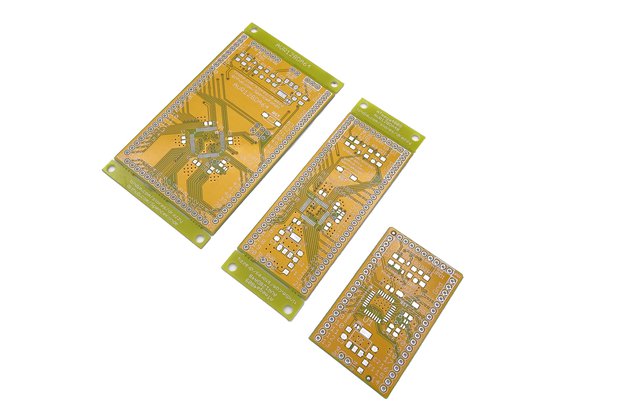
$3.95
Free Shipping!
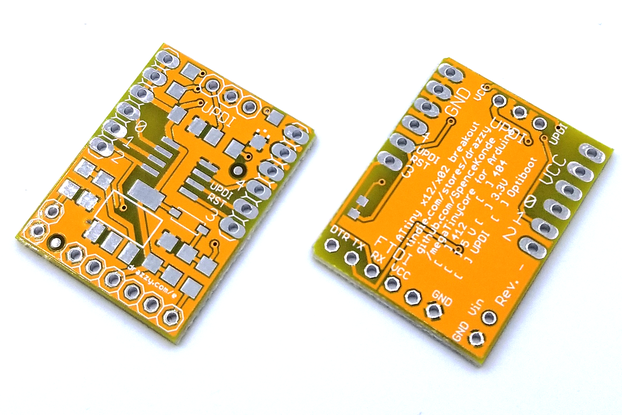
$1.70
Free Shipping!
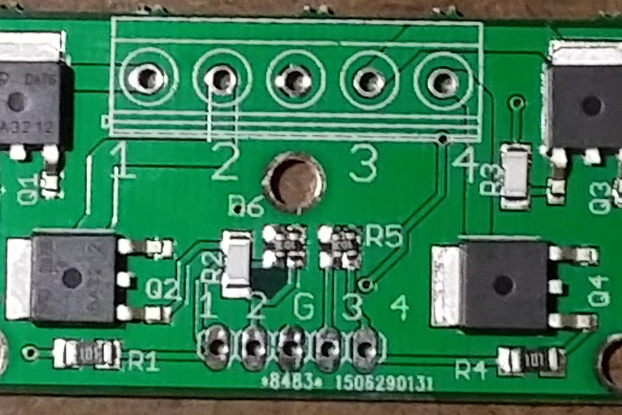
$13.00
Free Shipping!

$5.00
Free Shipping!
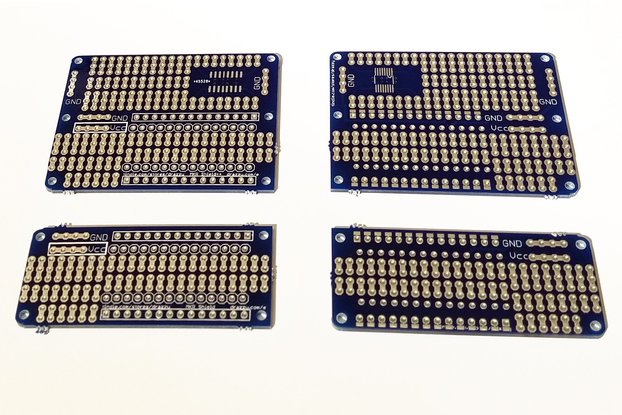
$5.50
Free Shipping!

$37.00
Free Shipping!
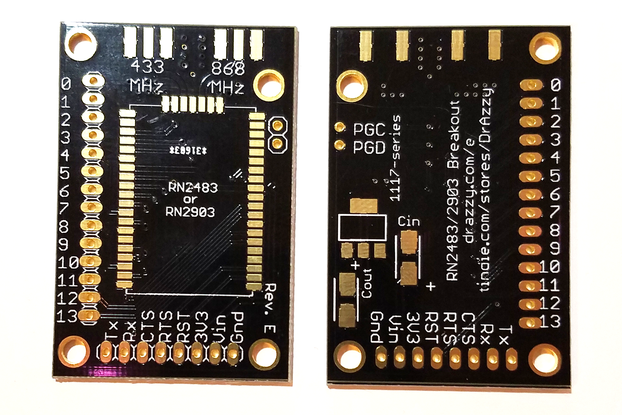
$3.00
Free Shipping!
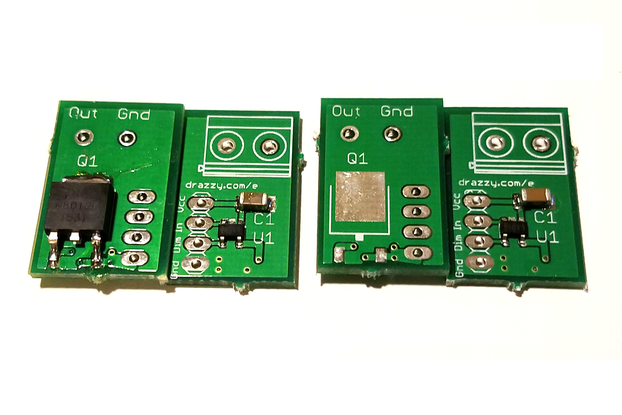
$8.00
Free Shipping!

$13.00
Free Shipping!
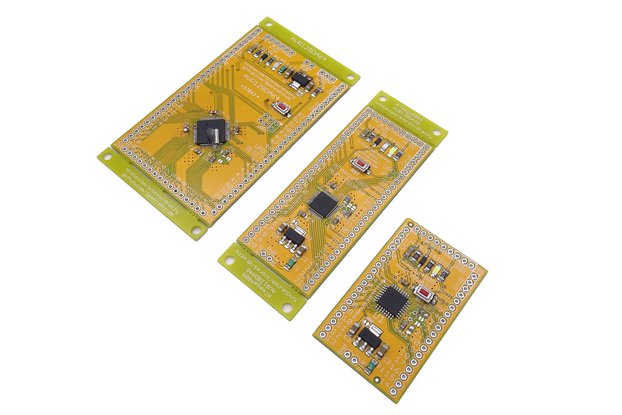
$15.00
Free Shipping!
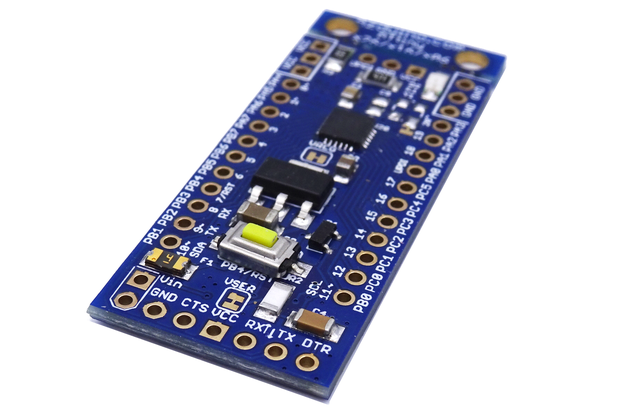
$12.50
Free Shipping!
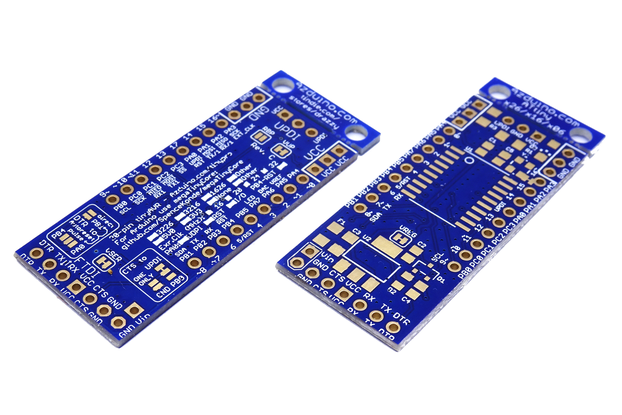
$2.25
Free Shipping!
By clicking Register, you confirm that you accept our Terms & Conditions
We recognize our top users by making them a Tindarian. Tindarians have access to secret & unreleased features.
We look for the most active & best members of the Tindie community, and invite them to join. There isn't a selection process or form to fill out. The only way to become a Tindarian is by being a nice & active member of the Tindie community!
